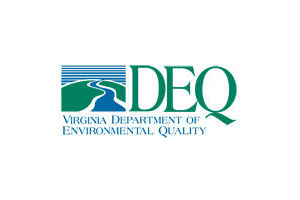
During winter weather, the use of salt keeps Virginia’s roads, parking lots and sidewalks safer, businesses and vital services open, and the economy running smoothly. However, unintended impacts can result in harm to aquatic life, corroded infrastructure and property, and increased salt levels in drinking water. Each year, environmental and property damage can cost thousands of dollars per treated lane mile.
When water quality in the Accotink Creek watershed in Fairfax County exhibited effects of salt, more than 60 stakeholders representing 40 organizations got together to tackle the problem of balancing public safety with protecting water quality. Representing residents, water providers, government agencies, property managers and businesses, the taskforce developed strategies on safe and responsible salt use to protect water quality, prevent damage to the environment – and even save money – by using less salt.
The result of the workgroup’s three-year effort is the Salt Management Strategy (SaMS) Toolkit, a comprehensive resource full of best practices for citizens, how to avoid excessive application, tips for education and outreach, and more. With this important work now completed, one of the founding stakeholders, the Northern Virginia Regional Commission, will shepherd its implementation throughout the region.
“Because winter storms and salt application strategies don’t follow watershed boundaries, we wanted to address salt reduction with a more comprehensive and regional effort,” said DEQ Northern Regional Director Tom Faha. “We were pleased to facilitate the development of the Salt Management Strategy with such a large and knowledgeable group of area partners. When the weather turns cold next winter, keep the SaMS Toolkit in mind. It’s full of recommendations you can use to protect your — and your local watershed’s — health.”
“Everyone has a role in ensuring the implementation of best practices to reduce the negative impacts of salt on the environment, and we will make sure conversation and progress continue to in the years ahead,” said NVRC Environmental and Resiliency Planning Director Norm Goulet. “We will be working with stakeholders to develop programs to track salt’s use and water quality impacts, and will continue educating our communities about ways to be winter salt smart.”
Visit DEQ’s website for more information on SaMS and the toolkit.










